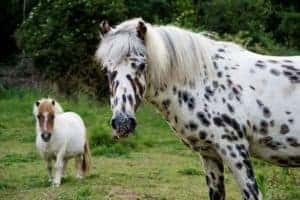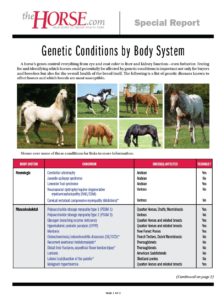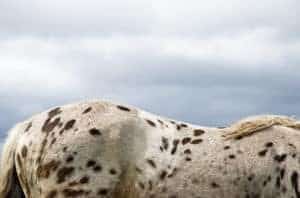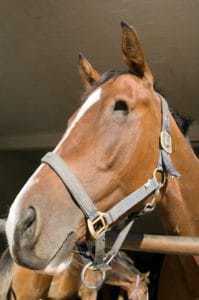
Dealing With Deteriorating Vision in Horses
Find out what behaviors and signs to watch for that suggest visual impairment, and learn how to help horses deal with deteriorating eyesight and blindness.

Find out what behaviors and signs to watch for that suggest visual impairment, and learn how to help horses deal with deteriorating eyesight and blindness.

A horse’s coat color genetics are important not just for aesthetic reasons; they can also have health implications.

Testing for and identifying which horses could potentially be affected by genetic conditions is important not only for buyers and breeders but also for the overall health of the breed itself.

Have you ever wondered how your horse sees the world, or how you should respond to an equine eye emergency? Get your equine eye and vision questions answered by a board-certified veterinary ophthalmologist.

What’s behind a horse’s coat color? The answer lies in coat color genetics.

Most horses adapt well to vision loss but still require special management in a safe environment.
Congenital stationary night blindness (CSNB) in Appaloosas has been linked to the leopard complex spotting in these horses. But how are these two apparently independent genetic

Congenital stationary night blindness causes vision deficits in Appaloosas with certain coat patterns.
Canadian researchers are investigating the cause of a condition found primarily in Appaloosas that prevents them from seeing in the dark. Congenital stationary night blindness (CSNB) is a hereditary, non-progressive condition for which there is

Learn more about 10 conditions that can affect the horse’s retina and optic nerve.
Stay on top of the most recent Horse Health news with
© 2022 Copyright Statement dolor sit amet, consetetur sadipscing User Terms, sed diam nonumy eirmod tempor invidunt ut labore et dolore magna aliquyam erat, sed diam voluptua. At vero eos et accusam et justo duo dolores et ea rebum. Stet clita kasd gubergren, no sea takimata sanctus est Lorem ipsum dolor sit amet.
"*" indicates required fields